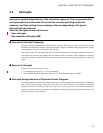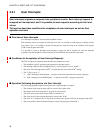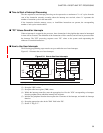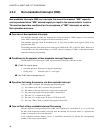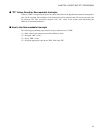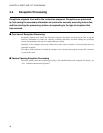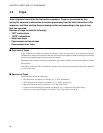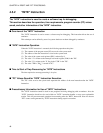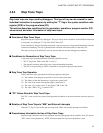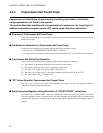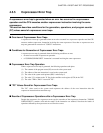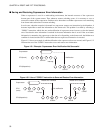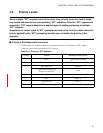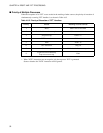
45
CHAPTER 4 RESET AND "EIT" PROCESSING
4.5.1 "INT" Instructions
The "INT" instruction is used to create a software trap.
This section describes the operation, time requirements, program counter (PC) values
saved, and other information of the "INT" instruction.
■ Overview of the "INT" Instruction
The "INT #u8" instruction is used to create a software trap with the interrupt number designated in the
operand.
■ "INT" Instruction Operation
When the "INT #u8" instruction is executed, the following operations take place.
(1) The contents of the program status (PS) are saved to the system stack.
(2) The address of the next instruction is saved to the system stack.
(3) The value of the system stack pointer (SSP) is reduced by 8.
(4) The value "0" is written to the "I" flag in the condition code register (CCR) in the "PS".
(5) The value "0" is written to the "S" flag in the "CCR" in the "PS".
(6) The value "TBR + 3FC
H
– 4 × u8" is stored in "PC".
■ Time to Start of Trap Processing for "INT" Instructions
The time required to start trap processing is 6 cycles.
■ "PC" Values Saved for "INT" Instruction Execution
The "PC" value saved to the system stack represents the address of the next instruction after the "INT"
instruction.
■ Precautionary Information for Use of "INT" Instructions
The "INT" instruction should not be used within an "INTE" instruction handler or step trace trap-handler
routine. This will prevent normal operation from resuming after the "RETI" instruction.



